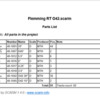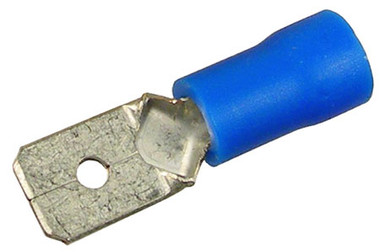I'm sure GG offers an easy solution.
The blades are ok, on some track needed because it won't take solder. They can take some effort to seat. I've had to whack and pry some track webs open a bit with chisel, screwdriver, or knife and a small hammer.
Rails have 3 main parts, a "foot", an upright "web", and a "head".
I usually solder to the track using the OUTSIDE edge of the rail foot so the wheel flanges won't hit solder. The center rail won't matter left or right , because the 99% of rollers only ride on the top of the railhead.
I prefer to attach the drop wire to the track, leaving the end bare, allowing a smaller hole than adding any fitting. The color here may be chosen to hide vs red or whatever. Then tie the drop in underneath. I've mentioned connection methods already.
One thing not mentioned is screw terminals with square wire grip plates (a square washer) are preferred imo; you don't need a circle connecter crimped on them.
I want to be able to run both my TMCC and LEGACY Engines around the hole layout without both engines stalling I don't run them at the same time
The conventional test is just to confirm the track receives power while under load. I do not expect this to clear up the tunnel. I expect a wire added to the home outlet ground and into the tunnel for that.., be it temporary or permanent as there are other ways to do this, incuding the buffer .... Or new mountains. This is just to address the issue outside the tunnel.
Here is my thoughts...... I think the one spot outside may have bad track. The signal or power is stopping there. Connections are the first suspect, the ground plane second. This requires a test in conventional to prove power first. The the ground wire to begin to address the signal.
The track past it is getting power through the tunnel, but the signal stops in the tunnel.
So it stops from a power issue in one place and stops from a signal issue in the other.
But new mountains are not necessarily the cure either. We have not confirmed that is the issue, just guessed. Run the ground under the tunnel.
If the chicken wire is exposed, attaching the ground wire to the chicken wire could turn the chicken wire into a big antenna. The chicken wire should not connect to any other circuits.....which is likely how it is, but I didn't build it.

































